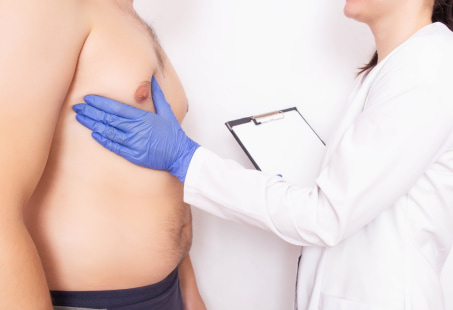Gynecomastia is a common condition that refers to the enlargement or overdevelopment of the breasts in males (“man boobs”). It can affect babies, teenagers, young adults and older men due to several reasons, some of which can be self-inflicted.
It can result in feelings of shame, embarrassment, and self-consciousness, which is why many people seek a solution to it. But the good news is that not all cases of gynecomastia require surgery. Gynecomastia can also go away on its own in certain instances. In any case, it’s a good idea to understand what causes this swelling of breasts in males and what can be done to treat it.
What Is Gynecomastia?
“Gyne” means “female or feminine,” and “mastia” means “breasts” – therefore, the literal gynecomastia definition can be feminine breasts. Medically, it’s an abnormal condition that results in the overgrowth of the breasts in men.
There are different grades of gynecomastia. One of them, which is reported in a 2017 study in Acta Biomedica, is as follows:
- Grade I – Mild gynecomastia with no excess skin.
- Grade IIa – Moderately large breasts with no excess skin.
- Grade IIb – Moderately large breasts with some excess skin.
- Grade III – Severe gynecomastia with excess skin (resembles drooping of female breasts)
This condition can affect both breasts (bilateral gynecomastia) or just one of them (unilateral gynecomastia). Although, according to Medscape, it is usually bilateral.
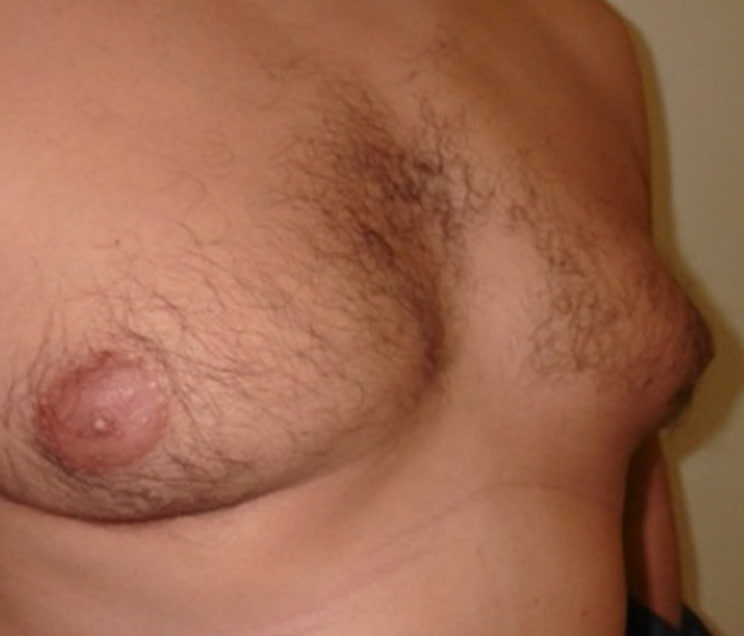
Another thing to note about this condition is that gynecomastia is a result of the overdevelopment of the glandular tissue of the breasts. It’s what’s referred to as true gynecomastia. It’s pseudo or false gynecomastia when the enlargement of the breasts results from a deposition of fat.
As reported in a review published in the Plastic and Reconstructive Surgery – Global Open, the development of gynecomastia has been noted at 3 different points in life, all of which correspond to certain hormonal changes:
- As newborns – 60-90% develop “palpable breast tissue” due to maternal estrogen. It goes away at the age of 1.
- During puberty – 69% of people develop it between the ages of 10 and 17.
- Old age – Those between the ages of 50 and 80 usually develop it as a result of hypogonadism (little to no sex hormones produced by the sex glands) and medications.
What Are The Causes Of Gynecomastia?
The causes of gynecomastia can include the following:
- Hormonal changes
- Overweight/obesity
- Medicines (e.g. anti-ulcer medication, antipsychotics, spironolactone, finasteride, chemotherapy)
- Health problems (e.g. kidney failure, liver disease, malnutrition, Klinefelter’s, hyperthyroidism)
- Tumours and cancer
- Drugs (e.g. marijuana, anabolic steroids, heroin) and alcohol
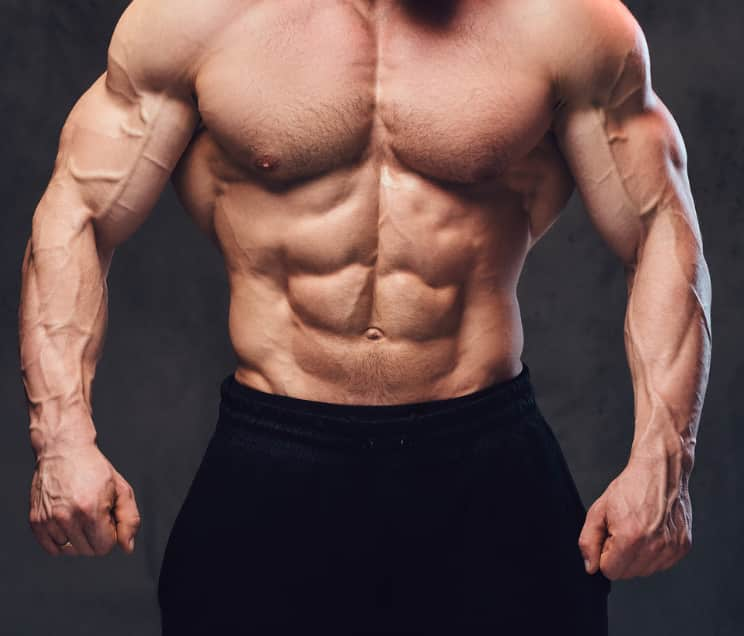
However, according to StatPearls, most of the gynecomastia cases are “idiopathic” – meaning the underlying cause is not known. But changes in the levels of estrogen and testosterone have clearly been connected to its development.
Here, it should be noted that there is no one cause of hormonal imbalances that can cause gynecomastia. For instance, in overweight/obese individuals, the fatty tissue can produce estrogen and upset its balance relative to testosterone in the body.
Similarly, finasteride, a drug popularly used in the treatment of male pattern baldness, can also upset hormonal balance. As reported in Cancer Medicine, finasteride can increase the level of estradiol (the main form of estrogen in the body), which might, in turn, cause gynecomastia.
But it can also occur naturally due to age-related changes in the body. As noted by the NHS, in older individuals, a decrease in testosterone and an increase in body fat (which can produce estrogen) can result in the enlargement of the breasts. In any case, you should further consult a medical professional to learn more about how do you get gynecomastia.
What Are The Symptoms Of Gynecomastia?
Gynecomastia symptoms may include the following:
- Tenderness
- Asymmetrical breasts (one breast larger than the other)
- Soreness
- Swelling
- A lump or fatty tissue underneath the nipple
According to the American Cancer Society, while gynecomastia is not a tumour like breast cancer, it can result in a lump underneath the nipple. So, to be absolutely certain about the diagnosis of your symptoms of gynecomastia, you must get yourself checked by a doctor.
How Do You Know If You Have Gynecomastia?
It is best to consult your doctor for a diagnosis of gynecomastia. To determine the underlying gynecomastia causes, you might be asked questions about any medications/therapies you’re on, any health problem you might be suffering from, and the duration for which you’ve had the condition, among other things.
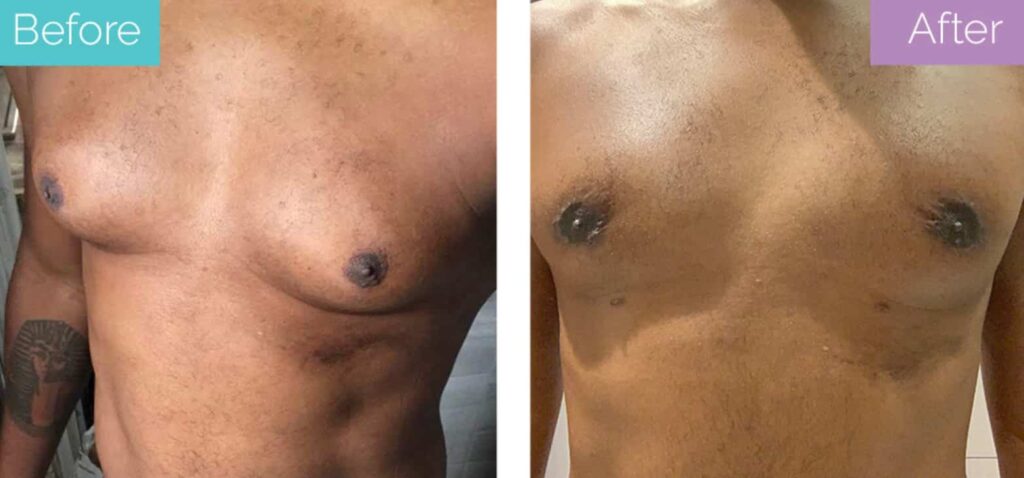
They’ll also perform a physical exam, and if needed, some tests might also be done, such as a mammogram, blood test, urine test, ultrasound, and biopsy. Your doctor will advise you on the tests you’ll need for an accurate diagnosis.
What Are The Stages Of Gynecomastia?
Three types of gynecomastia might develop in the following stages, according to StatPearls:
- Type 1/Florid gynecomastia – It’s one of the early gynecomastia stages, characterised by the increase in the number of ducts. It may last for around 4 months or less than that.
- Type 2/Fibrous gynecomastia – It’s when there’s greater “stromal fibrosis” – characterised by an increase in fibrous tissue with a negative impact on certain mammary structures – and “few ducts.” This type of fibrosis may be seen 1 year after the condition.
- Type 3/Intermediate gynecomastia – This also develops after 1 year and can be thought of as a transition stage from florid to fibrous gynecomastia.
When the condition has lasted more than 1 year, the fibrous type is more common and, unfortunately, not reversible, as per a 2013 study published in the Seminars in Plastic Surgery.
How To Treat Gynecomastia?
To treat gynecomastia, your doctor will first need to determine its underlying cause. For instance, if your doctor determines that your medications are causing breast enlargement, you might be recommended to discontinue the drug or try an alternative. Lifestyle changes might be recommended if it’s things like drugs and alcohol that are causing this problem.
However, certain drugs like tamoxifen, raloxifene, danazol, and anastrozole have also been used in gynecomastia treatment. But because of the serious side effects associated with these drugs, you must have an open and thorough consultation with your doctor.
Other than medication, there are also gynecomastia surgery treatment options, which can involve breast reduction surgery and/or liposuction. In some cases, the gynecomastia operation might be available on the NHS but you’ll have to meet certain conditions with regard to your weight, lifestyle, the amount of breast tissue that needs to be removed, etc. It’s best to ask your general practitioner about this.
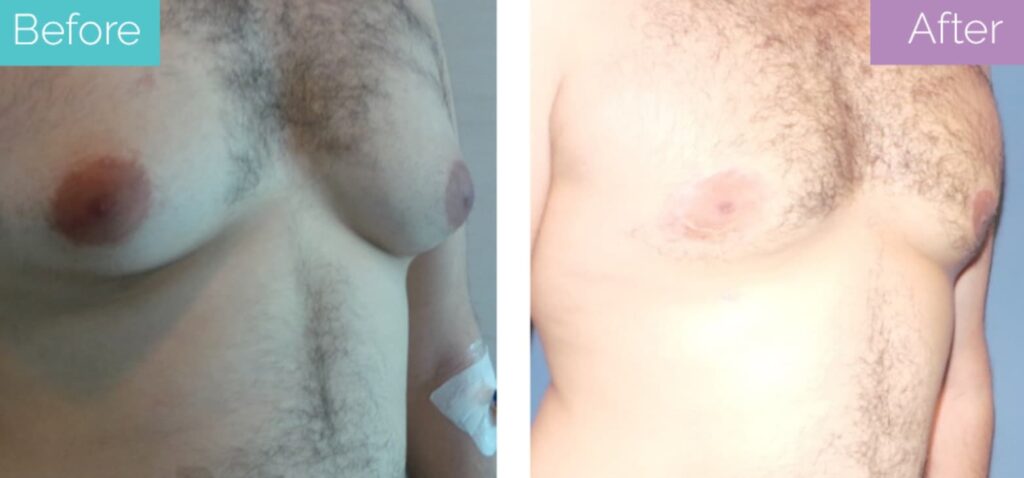
What should be noted is that not every case of gynecomastia needs treatment. For instance, temporary gynecomastia in newborns resolves on its own. Similarly, according to the Royal United Hospitals Bath NHS Foundation Trust, gynecomastia is common in teenagers but will probably resolve in 2-3 years without the need for any intervention. In fact, it also states that in most cases, gynecomastia treatments are not needed.
Gynecomastia Surgery Scars
The kind of gynecomastia surgery scars you might have will depend on the surgical technique. In the case of liposuction, the size of incisions is fairly small, although multiple of them are made for inserting the cannula to break the fat.
In the case of breast reduction, in which excess breast tissue, fat and skin are removed, the incisions will be larger in size, but still small. An experienced surgeon will try their best to place the incisions in areas where they are easily concealed and not as visible. With time, these scars should become less and less prominent as well.
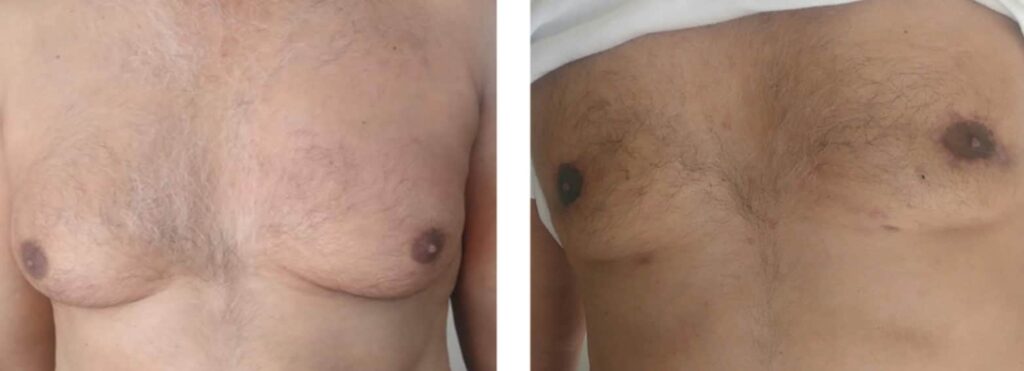
How Much Is Gynecomastia Surgery In The UK?
In the UK, male breast surgery might cost you anywhere from £4,000 to £6,000. The prices can vary according to the type and technique of the surgery, the location of the clinic and the experience of the surgeon.
For more affordable prices, however, people also consider getting gynecomastia surgery in Turkey. There, a liposuction might cost you around £1,500 and a breast reduction £2,000. Therefore, gynecomastia in Turkey can be 2-3 times cheaper. The reason behind it is the low cost of living and the exchange rates. Do your research, and you can find very experienced surgeons for your Turkey gynecomastia surgery.
Conclusion
While gynecomastia in men is a commonly occurring condition, those who have it can feel quite uncomfortable in their skin. In many cases, you might not need any treatment to make it go away, but it’s not the same for every patient.
In any case, what’s important is that gynecomastia can occur due to a vast variety of reasons. So, if you’re wondering how to stop gynecomastia, make sure you consult a doctor for an accurate diagnosis. Based on the underlying cause, they’ll prepare the most suitable treatment plan for you.
Reviewed and approved by Prof Dr Fuat Yuksel
FAQ
Will gynecomastia go away?
In newborns and teenagers, gynecomastia may go away on its own without the need for any treatment (although you must get checked). However, it can also be permanent.
How long does gynecomastia last?
In newborns, gynecomastia might go away after a year. In teenagers, it might be 2-3 years. But how long it can take for gynecomastia to go away can also depend on what caused it in the first place and whether or not you’re getting treatment for the underlying problem.
How common is gynecomastia?
Gynecomastia is a fairly common condition, and prevalence rates can vary in different age groups. But according to a study published in the Indian Journal of Endocrinology and Metabolism, a 32-65% prevalence rate has been reported.
How to shape the chest after gynecomastia surgery?
After the gynecomastia surgery, you might be given an elastic garment or compression vest to support the new shape of your chest during recovery. But to maintain the results, your doctor will likely advise you to maintain your weight and avoid things that can affect your breast tissue.
Can working out reduce gynecomastia?
With weight loss, there will be a reduction in fat, which can make your breasts look less large if fat is the problem. Additionally, the development of the pectoral muscles can also help improve the appearance of your chest.
Is gynecomastia a sign of infertility?
Gynecomastia and infertility may co-occur but if you have gynecomastia, it doesn’t always mean that you’re infertile.
Can alcohol cause gynecomastia?
Alcohol can cause breast enlargement in males. According to a study in the American Family Physician, people who have alcohol-related liver disease (ARLD) can develop this condition because of plant-based estrogen-like substances in alcohol and a disruption in the production of testosterone by alcohol.
How to get rid of gynecomastia?
Treatment of gynecomastia will depend on its cause. It might include taking certain medications or discontinuing them, making lifestyle changes, waiting it out or even surgery. Only your doctor can best advise you on the most effective treatment plan for you.
How to prevent gynecomastia?
While it’s not always possible to prevent gynecomastia, there are certain causative factors like drinking alcohol, taking anabolic steroids or other recreational drugs and maintaining your weight that may help prevent this condition.
